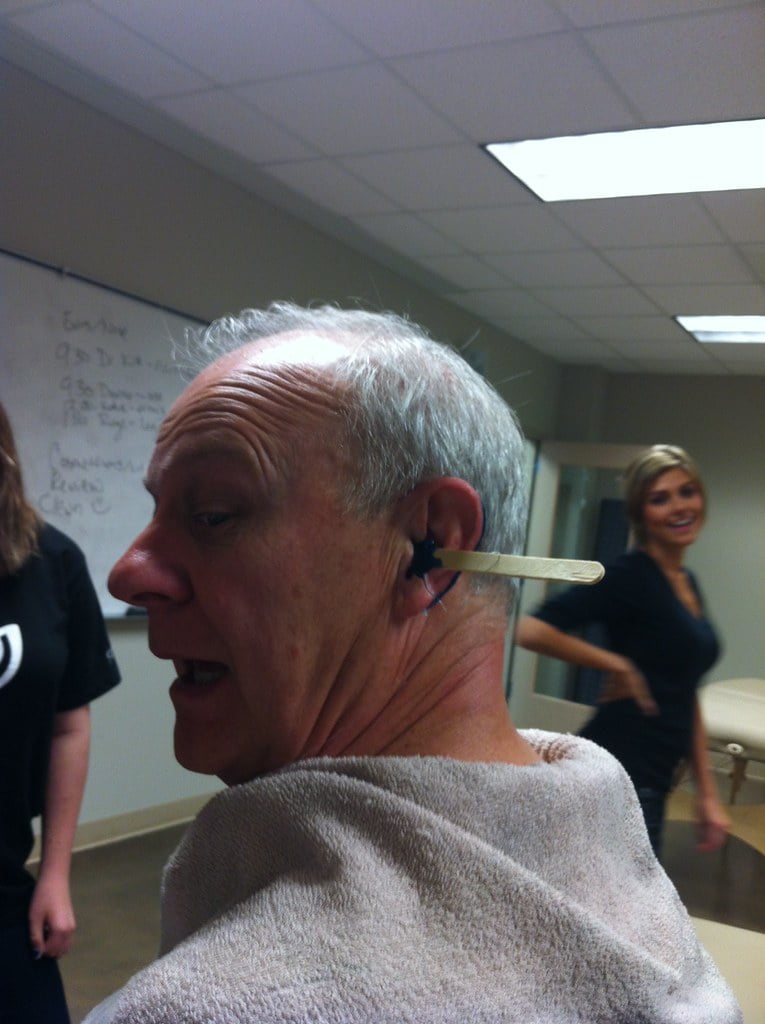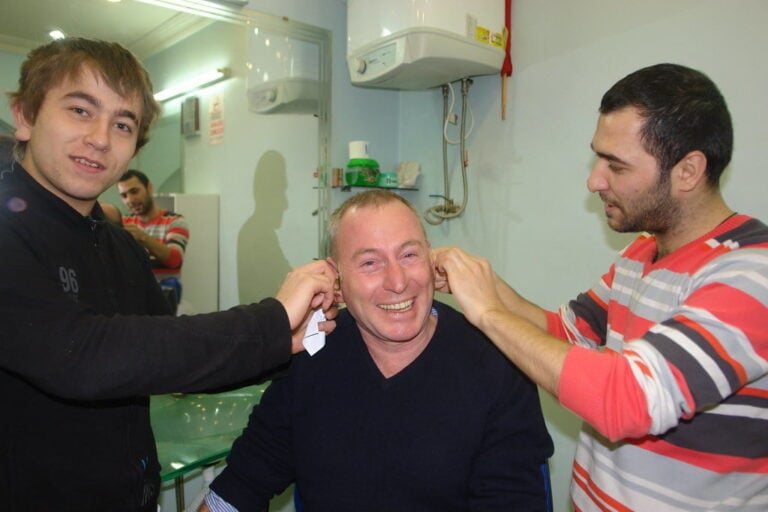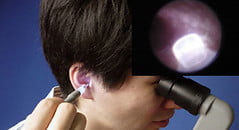An Overview of Courses in Manual Instrument Ear Wax Removal
Ear wax buildup can be an uncomfortable and frustrating issue for many individuals. It can result in hearing difficulties, discomfort, and even pain. While there are various methods to remove ear wax, one popular and effective technique is manual instrument ear wax removal. This method involves using specialized tools to gently remove the excess wax from the ear canal.
The Importance of Proper Training
Manual instrument ear wax removal is a delicate procedure that requires appropriate training and expertise. It is crucial for healthcare professionals to undergo specific courses to ensure they have the necessary skills and knowledge to perform this procedure safely and effectively.
Benefits of Professional Training
Investing time and resources in professional training courses for manual instrument ear wax removal offers numerous benefits. Some of the advantages include:
-
Enhanced Safety: Professional training equips healthcare professionals with the necessary techniques to ensure the safety of the patient during the procedure. They learn how to minimize the risk of injury or damage to the ear canal. By understanding the proper techniques and precautions, healthcare professionals can prevent complications and provide a safe and comfortable experience for their patients.
-
Improved Effectiveness: Proper training enables healthcare professionals to perform manual instrument ear wax removal with precision and efficiency. They understand the anatomy of the ear and how to effectively remove ear wax without causing discomfort or complications. By mastering the correct techniques, professionals can achieve optimal results and provide relief for their patients.
-
Knowledge of Equipment: Professional courses provide in-depth knowledge about the various tools used in manual instrument ear wax removal. Healthcare professionals learn how to select and use the appropriate instruments for different cases, ensuring optimal results. They become familiar with tools such as curettes, forceps, and suction devices, and understand their proper usage and benefits.
-
Understanding Ear Conditions: Through comprehensive training, healthcare professionals gain a deeper understanding of common ear conditions and their relation to ear wax buildup. This knowledge allows them to provide accurate diagnoses and appropriate treatment plans. By recognizing the signs and symptoms of different ear conditions, professionals can tailor their treatment approach and provide effective solutions for their patients.
-
Patient Satisfaction: Patients who undergo manual instrument ear wax removal performed by a trained professional often report higher levels of satisfaction. They appreciate the expertise and care provided during the procedure, leading to positive patient experiences and outcomes. By delivering high-quality and effective ear wax removal services, healthcare professionals can build trust and establish long-lasting relationships with their patients.
Manual Instrument Ear Wax Removal Courses
When considering a career in manual instrument ear wax removal, it is essential to pursue appropriate training courses. These courses provide the necessary theoretical knowledge and practical skills required to become proficient in the procedure. Here are some key aspects that these courses typically cover:
1. Ear Anatomy and Physiology
A comprehensive understanding of the ear’s structure and functions is essential for healthcare professionals performing manual instrument ear wax removal. Courses cover topics such as the anatomy of the ear canal, middle ear, and eardrum, as well as the physiology of hearing. This knowledge helps professionals identify potential complications and perform the procedure safely. They learn about the intricate structures of the ear and how they relate to the removal of ear wax.
2. Ear Wax Identification and Assessment
Courses focus on teaching healthcare professionals to identify different types of ear wax and assess the severity of the buildup. They learn how to differentiate between impacted ear wax and other ear conditions, enabling them to provide appropriate treatment. By understanding the characteristics and variations of ear wax, professionals can determine the most suitable approach for removal.
3. Techniques and Tools
Healthcare professionals learn various techniques for manual instrument ear wax removal, such as the use of curettes, forceps, and suction devices. They acquire proficiency in these techniques through hands-on practice and guidance from experienced instructors. By mastering different techniques, professionals can adapt their approach based on the specific needs of each patient.
4. Safety and Hygiene
Ensuring the safety and hygiene of the patients is of utmost importance during manual instrument ear wax removal. Courses emphasize the significance of infection control, sterilization, and proper disposal of contaminated materials to prevent cross-contamination and protect both patients and professionals. Professionals learn about proper hygiene practices and infection control protocols to maintain a clean and safe environment.
5. Practical Training and Hands-on Experience
To gain confidence and proficiency in manual instrument ear wax removal, professionals undergo practical training under the supervision of experienced instructors. This hands-on experience allows them to apply the knowledge gained in a real clinical setting, developing their skills and technique. By practicing in a controlled environment, professionals can refine their abilities and become more comfortable with the procedure.
6. Continuing Education and Updates
As with any medical procedure, staying up-to-date with the latest advancements and best practices is crucial. Courses often provide information on continuing education opportunities and resources to ensure healthcare professionals remain well-informed and maintain their expertise. By actively seeking continuous education and staying updated on the latest developments, professionals can provide the highest quality of care to their patients.
Conclusion
Manual instrument ear wax removal is a valuable procedure that can provide relief to individuals experiencing wax buildup. However, it is essential that healthcare professionals undergo proper training and education to perform the procedure safely and effectively. Professional courses offer the necessary theoretical knowledge and practical skills to ensure patient safety, satisfaction, and positive outcomes. By investing in training, healthcare professionals can confidently provide high-quality manual instrument ear wax removal services to their patients.
FAQ
- Why is proper training important for manual instrument ear wax removal?
Proper training is important for manual instrument ear wax removal because it equips healthcare professionals with the necessary techniques to ensure the safety of the patient during the procedure. They learn how to minimize the risk of injury or damage to the ear canal, preventing complications and providing a safe and comfortable experience for patients.
- What are the benefits of professional training for manual instrument ear wax removal?
Professional training offers enhanced safety, improved effectiveness, knowledge of equipment, understanding of ear conditions, and higher patient satisfaction. Healthcare professionals learn proper techniques, achieve optimal results, select appropriate instruments, provide accurate diagnoses, and tailor treatment plans, leading to positive patient experiences and outcomes.
- What do manual instrument ear wax removal courses cover?
Manual instrument ear wax removal courses cover ear anatomy and physiology, ear wax identification and assessment, techniques and tools, safety and hygiene, practical training and hands-on experience, and continuing education and updates. These courses provide theoretical knowledge and practical skills required to become proficient in the procedure.
- What is emphasized in manual instrument ear wax removal courses regarding safety and hygiene?
Manual instrument ear wax removal courses emphasize the significance of infection control, sterilization, and proper disposal of contaminated materials to prevent cross-contamination and protect both patients and professionals. Healthcare professionals learn about proper hygiene practices and infection control protocols to maintain a clean and safe environment.







